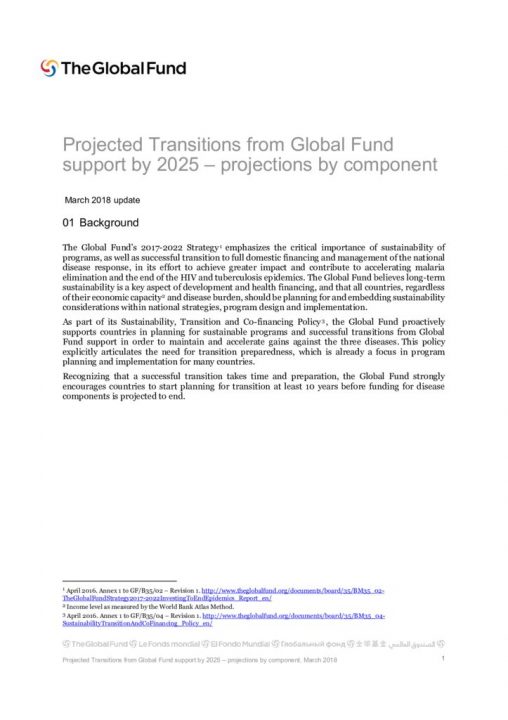
Projected Transitions from Global Fund support by 2025 – projections by component
Summary
The Global Fund’s 2017-2022 Strategy1 emphasizes the critical importance of sustainability of programs, as well as successful transition to full domestic financing and management of the national disease response, in its effort to achieve greater impact and contribute to accelerating malaria elimination and the end of the HIV and tuberculosis epidemics. The Global Fund believes long-term sustainability is a key aspect of development and health financing, and that all countries, regardless of their economic capacity2 and disease burden, should be planning for and embedding sustainability considerations within national strategies, program design, and implementation.
As part of its Sustainability, Transition and Co-financing Policy 3, the Global Fund proactively supports countries in planning for sustainable programs and successful transitions from Global Fund support in order to maintain and accelerate gains against the three diseases. This policy explicitly articulates the need for transition preparedness, which is already a focus in program planning and implementation for many countries.
Recognizing that a successful transition takes time and preparation, the Global Fund strongly encourages countries to start planning for transition at least 10 years before funding for disease components is projected to end.
